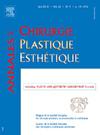Combined ultrasound imaging/neurophysiological evaluation for surgical planning in upper limb traumatic nerve injuries with concomitant vascular damage: Two emblematic cases and a review of litterature
IF 0.5
4区 医学
Q4 SURGERY
引用次数: 0
Abstract
Background
Traumatic injuries and penetrating traumas of the upper limb are at high risk of combined neurovascular lesion, due to anatomical proximity of main vessels and nerves. Occasionally, post-traumatic pseudoaneurysms or thrombi can develop in the site of trauma or surgery; these vascular complications represent a real urgency and require an accurate and timely diagnosis. The neurophysiological investigation still represents the gold standard for quantification, localization of nerve injuries and outcome prediction.
Methods
We reviewed a database of cases of upper limb trauma from the last two years with concomitant vascular and nervous damage evaluated using a combined ultrasound imaging/neurophysiological approach. Furthermore, among these, we have selected two emblematic cases of proximal upper limb injury with late-onset of vascular complications which came to our attention almost a month after trauma. Compound motor action potentials (CMAP) and sensory nerve action potentials (SNAP) were recorded by superficial electrodes and compared with the contralateral electrodes to estimate the percentage of affected fibres and possible recovery. Maximal cross-sectional area (CSA) of each nerve in the traumatic site and in the typical entrapment zones was recorded measuring at the inner hyperechogenic part of each nerve. Finally, a literature review was conducted.
Results
Our study confirms the importance of the use of electrophysiology in the diagnostic process of post-traumatic nerve injuries, with a diagnostic accuracy that increases significantly if associated with ultrasonography possibly integrated by Doppler.
Conclusions
The results reported in this study are very encouraging in the combined use of neurophysiology and ultrasonography in the approach to upper limb trauma with concomitant vascular and nervous damage; larger-scale studies are desirable to strengthen results.
Les blessures traumatiques et les traumatismes pénétrants du membre supérieur présentent un risque élevé de lésion neurovasculaire combinée, en raison de la proximité anatomique des principaux vaisseaux et nerfs. Parfois, des pseudoanévrismes ou des thrombi post-traumatiques peuvent se développer sur le site d’un traumatisme ou d’une intervention chirurgicale ; ces complications vasculaires représentent une réelle urgence et nécessitent un diagnostic précis et rapide. L’investigation neurophysiologique représente toujours la référence en matière de quantification, de localisation des lésions nerveuses et de prédiction des résultats. Nous avons examiné une base de données sur les traumatismes des membres supérieurs survenus au cours des deux dernières années avec des lésions vasculaires et nerveuses concomitantes évaluées à l’aide d’une approche combinée échographique/neurophysiologique. Par ailleurs, parmi ceux-ci, nous avons sélectionné deux cas emblématiques de lésions proximales du membre supérieur avec apparition tardive de complications vasculaires qui ont retenu notre attention près d’un mois après le traumatisme. Les potentiels d’action motrice composée (CMAP) et les potentiels d’action nerveuse sensorielle (SNAP) ont été enregistrés par des électrodes superficielles et comparés aux électrodes controlatérales pour estimer le pourcentage de fibres affectées et la récupération possible. La surface transversale maximale (CSA) de chaque nerf dans le site traumatique et dans les zones de piégeage typiques a été enregistrée en mesurant la partie hyperéchogène interne de chaque nerf. Enfin, une revue de la littérature a été réalisée. Notre étude confirme l’importance de l’utilisation de l’électrophysiologie dans le processus diagnostique des lésions nerveuses post-traumatiques, avec une précision diagnostique qui augmente de manière significative si elle est associée à l’échographie éventuellement intégrée par Doppler. Les résultats rapportés dans cette étude sont très encourageants dans l’utilisation combinée de la neurophysiologie et de la neurosonologie dans l’approche des traumatismes des membres supérieurs avec atteintes vasculaires et nerveuses concomitantes ; des études à plus grande échelle sont souhaitables pour renforcer les résultats.
上肢外伤性神经损伤伴血管损伤手术方案的超声/神经生理联合评价:2例典型病例及文献复习。
背景:上肢外伤性损伤和穿透性损伤由于解剖上主要血管和神经的接近,是发生神经血管合并病变的高危部位。偶尔,创伤后假性动脉瘤或血栓可在创伤或手术部位发展;这些血管并发症代表了真正的紧迫性,需要准确和及时的诊断。神经生理学研究仍然是神经损伤量化、定位和预后预测的金标准。方法:我们回顾了过去两年中伴有血管和神经损伤的上肢外伤病例数据库,采用超声成像/神经生理学联合方法进行评估。此外,在这些病例中,我们选择了两个具有代表性的上肢近端损伤伴晚发性血管并发症的病例,这些病例在创伤后近一个月引起了我们的注意。通过浅表电极记录复合运动动作电位(CMAP)和感觉神经动作电位(SNAP),并与对侧电极进行比较,以估计受影响纤维的百分比和可能的恢复。在每条神经的内部高回声部分测量创伤部位和典型卡压区每条神经的最大横截面积(CSA)。最后,进行文献综述。结果:我们的研究证实了电生理在创伤后神经损伤诊断过程中的重要性,如果结合多普勒超声检查,其诊断准确性将显著提高。结论:神经生理学和超声联合应用于上肢创伤合并血管和神经损伤的入路,结果令人鼓舞;需要更大规模的研究来加强结果。
本文章由计算机程序翻译,如有差异,请以英文原文为准。
求助全文
约1分钟内获得全文
求助全文
来源期刊
CiteScore
1.00
自引率
0.00%
发文量
86
审稿时长
44 days
期刊介绍:
Qu''elle soit réparatrice après un traumatisme, pratiquée à la suite d''une malformation ou motivée par la gêne psychologique dans la vie du patient, la chirurgie plastique et esthétique touche toutes les parties du corps humain et concerne une large communauté de chirurgiens spécialisés.
Organe de la Société française de chirurgie plastique reconstructrice et esthétique, la revue publie 6 fois par an des éditoriaux, des mémoires originaux, des notes techniques, des faits cliniques, des actualités chirurgicales, des revues générales, des notes brèves, des lettres à la rédaction.
Sont également présentés des analyses d''articles et d''ouvrages, des comptes rendus de colloques, des informations professionnelles et un agenda des manifestations de la spécialité.

 求助内容:
求助内容: 应助结果提醒方式:
应助结果提醒方式:


